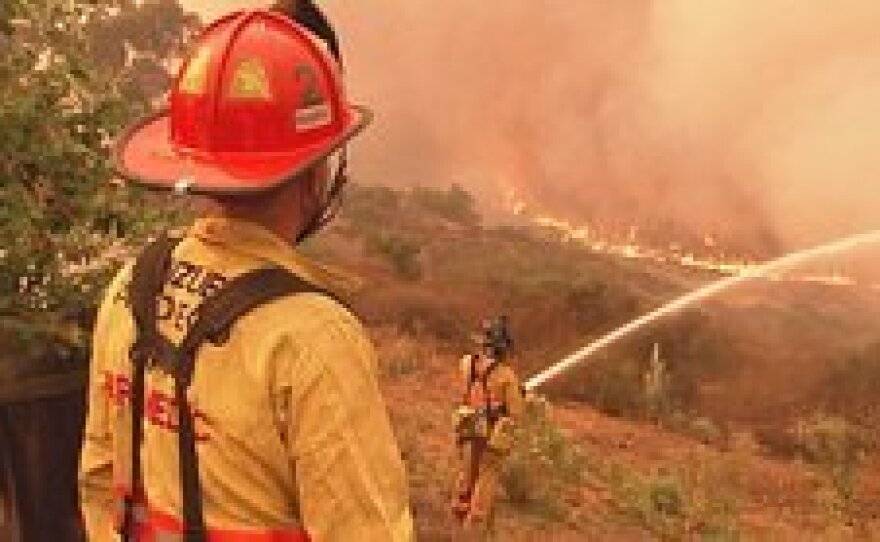The California Board of Forestry and Fire Protection is proposing a "vegetation treatment" plan to protect California from future wild fires.
The plan proposes the use of prescribed burns, chopping down, weeding, grazing animals and herbicides on tens of millions of acres of state and federal lands across California over 30 years.
The controlled burn method to reduce the intensity of wildfires has been in operation for years. It has also been the target of criticism, especially in Southern California.
Last week, a public hearing was held in Ventura to discuss the project after state agencies received thousands of letters against it.
Rick Halsey is a biologist and director of the California Chaparral Institute. He said the plan is a "major threat to nature" in California because one-third of the state lands would be cleared. Halsey said prescribed burns, which make up more than 50 percent of the vegetation treatment plan, don't actually work to prevent wildfire in San Diego County because its not a one-size-fits-all-ecosystems plan.
Halsey said, in the cooler climate of Northern California, burning vast areas of dense forest could be effective. But he said, Southern California's arid climate and the native landscape covered in dry scrub brush renders the same techniques unsuccessful.
He pointed to the recent Silver Fire, which burned 20,000 acres and destroyed 26 homes near Banning, as a challenge to the theory that prescribed burns prevent fires in Southern California.
Halsey said because the Silver Fire burned in part of the footprint of the 2006 Esmerelda Fire, it proves that young vegetation can carry a fire, which is contrary to what proponents of prescribed burns say.
Halsey said there are other ways to protect homes in San Diego County from wildfires. He said instead, the plan should focus on buffering individual properties.
"Science has clearly shown now over the last 10, 15 years that the best place to do the vegetation treatment that they're proposing is right around communities," he said. "Encourage defensible space around homes, put the community golf course right up against the forest instead in the middle of the community — there's a lot of things that you can do to create a permanent solution."
Cal Fire said the vegetation treatment plan is necessary because of an increase in the number and severity of wildfires in the last 30 years and an increasing population in the state with millions of people living in rural or fire-prone areas.
In the executive summary of the project proposal, the agency points to the influence of climate change on wildfire severity.
It says an increase in drought and predictions of higher temperatures and more grasslands all point to the need for the vegetation treatment plan.








